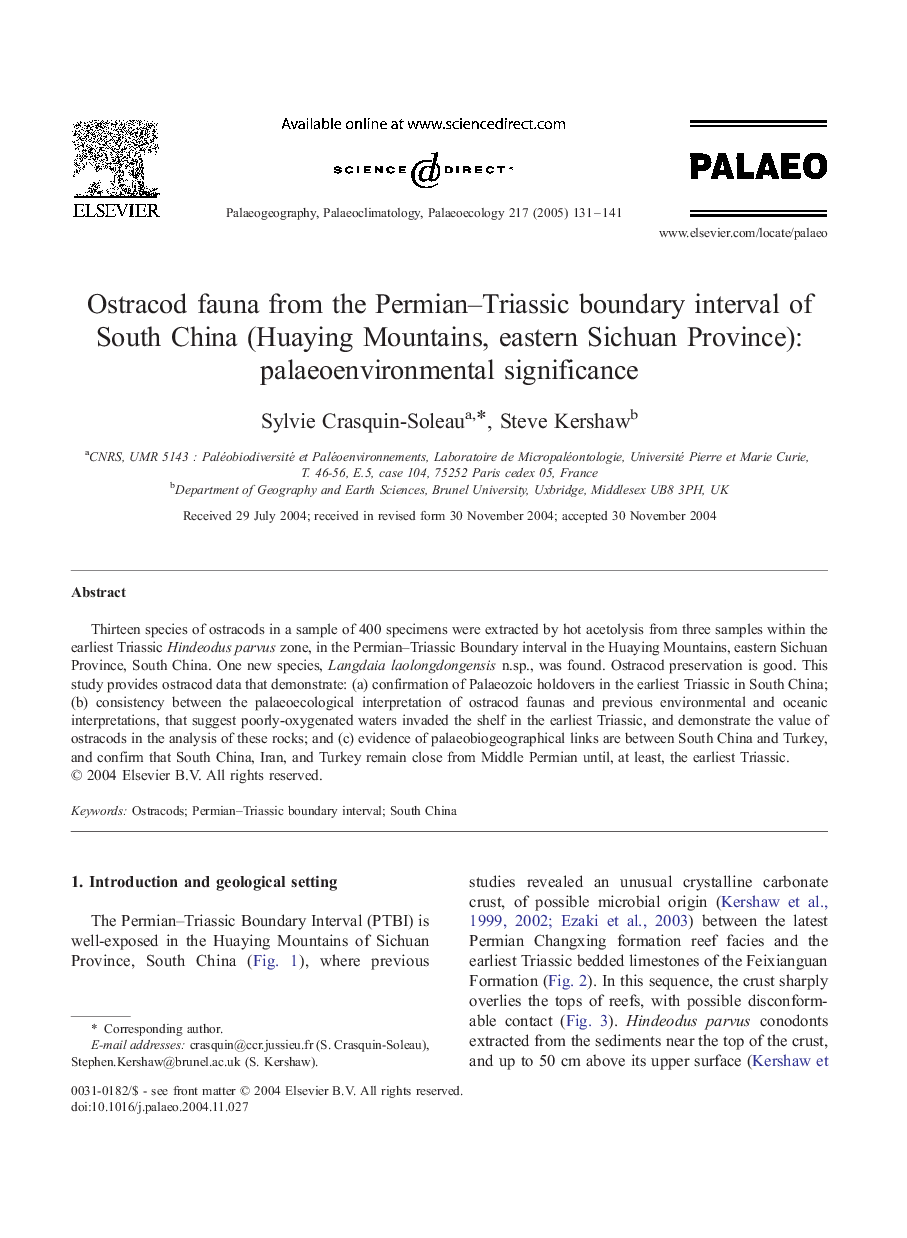| Article ID | Journal | Published Year | Pages | File Type |
|---|---|---|---|---|
| 9463084 | Palaeogeography, Palaeoclimatology, Palaeoecology | 2005 | 11 Pages |
Abstract
Thirteen species of ostracods in a sample of 400 specimens were extracted by hot acetolysis from three samples within the earliest Triassic Hindeodus parvus zone, in the Permian-Triassic Boundary interval in the Huaying Mountains, eastern Sichuan Province, South China. One new species, Langdaia laolongdongensis n.sp., was found. Ostracod preservation is good. This study provides ostracod data that demonstrate: (a) confirmation of Palaeozoic holdovers in the earliest Triassic in South China; (b) consistency between the palaeoecological interpretation of ostracod faunas and previous environmental and oceanic interpretations, that suggest poorly-oxygenated waters invaded the shelf in the earliest Triassic, and demonstrate the value of ostracods in the analysis of these rocks; and (c) evidence of palaeobiogeographical links are between South China and Turkey, and confirm that South China, Iran, and Turkey remain close from Middle Permian until, at least, the earliest Triassic.
Keywords
Related Topics
Physical Sciences and Engineering
Earth and Planetary Sciences
Earth-Surface Processes
Authors
Sylvie Crasquin-Soleau, Steve Kershaw,
